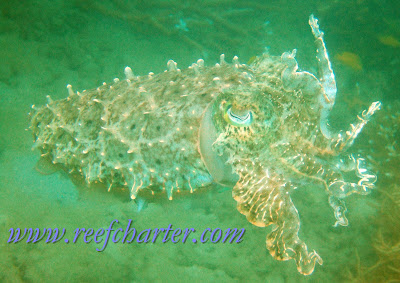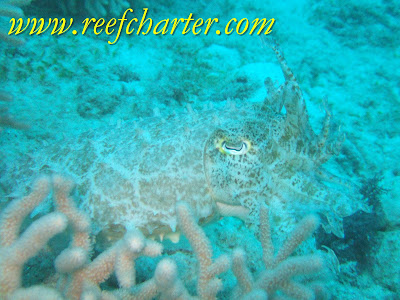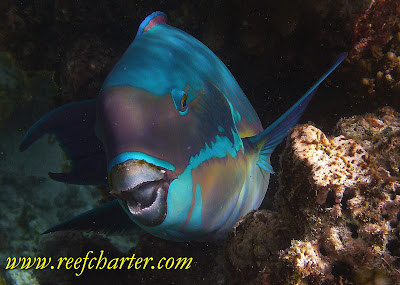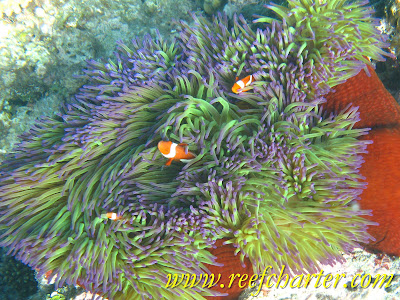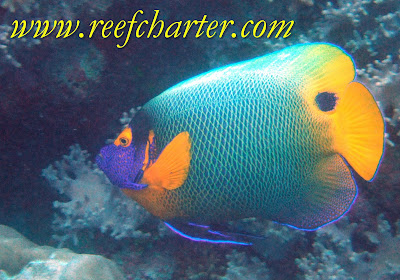
This is another of the vibrant and colourful fish found commonly seen our our trips to the Great Barrier Reef. There are over 80 different species of Angelfish. Most of which are about 30 cm (12″) long. Most of the different species exhibit a friendly and curious personality and often come over to investigate what the divers are doing on their turf. Smaller species such as the bi-coloured angel are very popular with home aquariums. Angel fish are found at all levels of the bommie fields, from the surface to swimming around the base of the reef formations and seabed.
The angel fish changes colours as it reaches maturity, and can also change sex if the male in the group disappears. If this happens the dominate female in the group will then become the male. The angel fish releases it’s eggs to float with the plankton until hatched.
The angel fish changes colours as it reaches maturity, and can also change sex if the male in the group disappears. If this happens the dominate female in the group will then become the male. The angel fish releases it’s eggs to float with the plankton until hatched.
